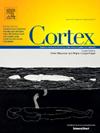Do explicit self-reflection traits relate to implicit bodily self-consciousness? Insights from asynchronous stimulation in embodiment illusions
IF 3.3
2区 心理学
Q1 BEHAVIORAL SCIENCES
引用次数: 0
Abstract
Does the way we explicitly reflect on our bodily, mental, and social self relate to our implicit bodily self-consciousness? To address this question, we investigated how self-reflection traits and sensory characteristics explain inter-individual variability in experiencing ownership, agency, or referral of touch over a rubber hand or virtual full-body in 70 young girls. The reduction of these embodiment feelings by an experimentally induced asynchrony between the participant's and the virtual body's stimulation (tactile or motor) can be seen as indicative of a robust bodily self-consciousness. In the visuo-motor full-body illusion, asynchrony reduced: agency more strongly in participants with a high tendency to reflect about social-self; ownership more in those with positive reflections towards the bodily self; agency and ownership more in participants with lower cardiac interoceptive accuracy. Overall, we highlight the importance of accounting for embodiment variability during asynchronous stimulation and provide novel insights into how explicit reflections about oneself relate to bodily self-consciousness’ components in girls, underscoring the need for further investigation in other populations.
外显自我反思特征与内隐身体自我意识有关吗?体现幻象中异步刺激的洞见。
我们对身体、精神和社会自我的明确反思方式是否与我们内在的身体自我意识有关?为了解决这个问题,我们调查了自我反思特征和感官特征如何解释70名年轻女孩在经历所有权、代理或转介触摸时的个体差异,通过橡胶手或虚拟全身。通过实验诱导的参与者和虚拟身体的刺激(触觉或运动)之间的异步,这些体现感的减少可以被视为一种强大的身体自我意识的指示。在视觉-运动全身错觉中,对社会自我反思倾向高的参与者的非同步性减少的能动性更强;对身体自我持积极态度的人更有所有权;代理和所有权在心脏内感受准确性较低的参与者中更多。总的来说,我们强调了在异步刺激中考虑体现变异性的重要性,并提供了关于女孩身体自我意识成分与自我的显式反映之间关系的新见解,强调了在其他人群中进一步研究的必要性。
本文章由计算机程序翻译,如有差异,请以英文原文为准。
求助全文
约1分钟内获得全文
求助全文
来源期刊

Cortex
医学-行为科学
CiteScore
7.00
自引率
5.60%
发文量
250
审稿时长
74 days
期刊介绍:
CORTEX is an international journal devoted to the study of cognition and of the relationship between the nervous system and mental processes, particularly as these are reflected in the behaviour of patients with acquired brain lesions, normal volunteers, children with typical and atypical development, and in the activation of brain regions and systems as recorded by functional neuroimaging techniques. It was founded in 1964 by Ennio De Renzi.
 求助内容:
求助内容: 应助结果提醒方式:
应助结果提醒方式:


